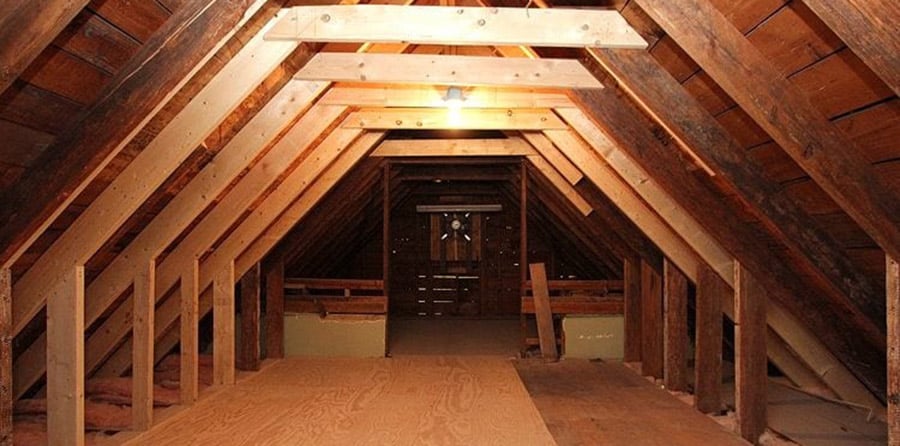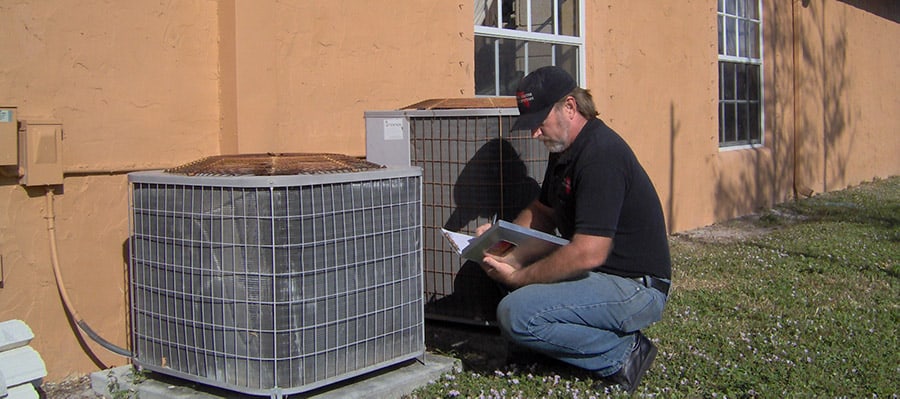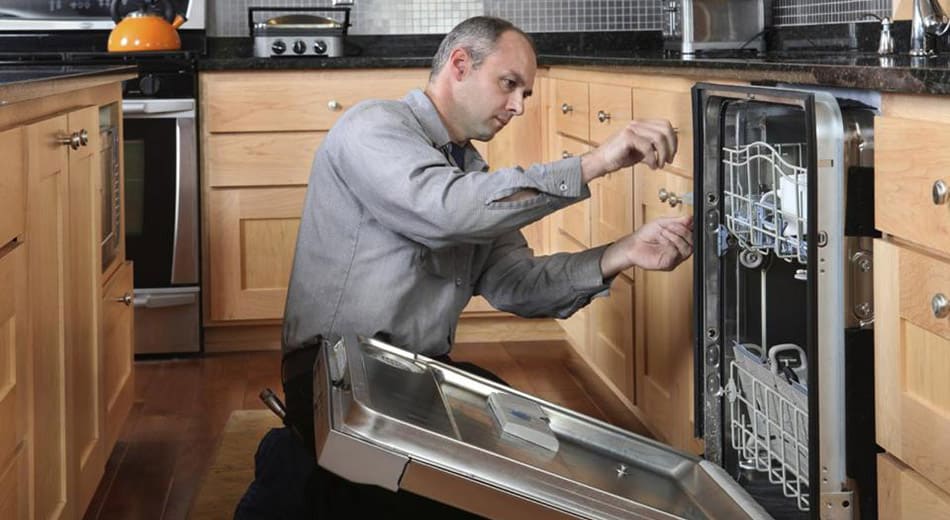A home inspection checklist can be used to evaluate a home’s structural and mechanical systems before you buy a personal home or investment property. It covers major plumbing, electrical, heating, and air conditioning systems and structural components such as the roof, walls, and foundation.
A professional home inspection checklist can help objectively understand a home’s condition before purchasing or selling.
Download our home inspection checklist for buyers pdf – Printable Home Inspection Checklist
Download our Professional Home Inspection Checklist PDF free
You can do your home inspection; however, it should not stand in place of a professional inspection. A DIY home inspection checklist can help you examine homes to purchase during the buying process’s preliminary phases. You can also use it to examine your home and plan annual maintenance.

What is a Home Inspection?
A home inspection process includes a visual inspection of the home’s structure and its components, such as the roof, plumbing, electrical systems, and HVAC systems, according to a set of Standards of Practice by a professional inspector.
The International Association of Certified Home Inspectors (NACHI) defines a home inspection as:
A home inspection is a non-invasive, visual examination of the accessible areas of a residential property, performed for a fee, which is designed to identify defects within specific systems and components defined by these Standards that are both observed and deemed material by the inspector.
NACHI Standards of Practice
A professional home inspector will look for major issues that affect structural integrity and safety.
A home inspection is a critical part of home buying and selling. Having a professional inspection company view the home is important to identify any major repairs.
Buyers Home Inspection Checklist
Inspections visually inspect the home’s structure, system, and condition to look for major structural and safety issues. With assistance from your real estate agent, you determine if any costly repairs or maintenance need to be done before move-in day.
Be sure to hire a qualified home inspector certified by a reputable home inspection association, like NACHI or ASHI, as this will ensure you get a detailed report. Take your time during this process so that you know exactly what kind of investment you’re making in your home and can budget accordingly for potential repairs down the road.
Whether you’re a first-time home buyer or a seasoned real estate investor, this inspection template for buyers is convenient as it will help discern if a property is worthwhile.
You should use this information to help you examine a house and help you sift properties, and make reasonable purchase offers. You can do this if you are handy around the house. An inspection checklist for potential buyers shouldn’t replace hiring a professional home inspector. Without a professional home inspection report, negotiating repairs will be difficult.
A real estate purchase agreement may have an inspection contingency or due diligence period to inspect a property before closing. A licensed home inspector can help confirm the information on a seller’s disclosure statement.
A good inspector can perform a thorough home inspection in 2 to 3 hours, with the inspection report available within 24 hours in most cases, allowing you time for the prospective buyer to look for red flags and potentially negotiate the cost of repairs on your new home. Even the cost of minor repairs can add up quickly.
A comprehensive home inspection checklist for new construction is still important. There is no such thing as a perfect home, and even new homes have defects that must be inspected. A detailed inspection can help provide peace of mind that your purchase is sound.
Seller Home Inspection Checklist
A home inspection checklist for sellers is perfect for any real estate agent or homeowner who wants to spruce up or repair a house before the sale. Making home repairs and decluttering a property can help you prepare for an inspection day and get the most money from the sale.
Our Home Inspection Checklist
Anyone wishing to do a DIY home inspection can follow this checklist. You can use this as a new construction home inspection checklist or when buying old houses.
- We’ve compiled a list of 21 Reasons Why You Should Have a Home Inspection.
- Check out our 35 Seller Tips to Pass a Home Inspection.
What we recommend you will need to complete your inspection checklist:
- Checklist: Print this home inspection form with a clipboard and pencil
- Clothing: Safety glasses, gloves, sneakers, and old clothing or coveralls
- Tools: Flashlight, GFCI outlet tester, infrared thermometer, binoculars, and a cell phone or camera to take pictures.
Insider’s Note: you can purchase a GFCI outlet tester and an infrared thermometer in the hardware department at Walmart or in home improvement stores for less than $25 each. We use a FLIR RT50 Receptacle Tester in our inspections. It’s a professional-grade GFCI tester available at Amazon.
Safety Note: Performing a home inspection can be dangerous, with a risk of injury. Don’t perform any task you are uncomfortable with or are physically unable to perform. Contact a certified home inspector to conduct a thorough home inspection and receive a written report.
Exterior

Exterior Siding
- Is there damage to the siding, such as wood rot, chipped or broken pieces, etc.?
- Is there peeling paint on painted surfaces?
- Are there loose or missing pieces of siding?
- Are there cracks in the brick veneer or stucco walls?
- Is there a minimum of 6 inches of ground clearance?
Windows
- Is there broken glass in the windows?
- Is there wood rot in the window frames and sashes?
- What’s the condition of the caulking around the windows? Is it dry and brittle?
- Is there peeling paint on wood sashes and framing?
Exterior Doors
- Is there water damage to the bottom of the door?
- Is there wood rot in the exterior door frames and trim?
- Is there peeling paint on wood door frames and trim?
Landscaping, Ground, and Grading
- Does the ground slope away from the house?
- Is there erosion around the foundation walls?
- Are there low-lying or wet areas of the yard?
- Are there trees growing within 8-10 ft of the foundation?
- Are there any dead or leaning trees that could fall on the house?
- Are there tree limbs overhanging the roof?
- Is the shrubbery touching the exterior of the home?
- Are there vines growing on the exterior walls?
Fence
- Walk along the fence, checking for loose posts and broken boards.
- Does the fence feel sturdy when tugged on?
- Do gates close and lock properly?
Driveway, Walkway, and Patio
- Do the concrete driveway, walkway, and patio surfaces slope away from the house?
- Is there settlement causing uneven walking surfaces?
Deck
- Are the decking boards weathered?
- Are the decking boards weak when walked on?
- Are the handrails secure?
- Are the steps secured and easy to walk on?
Foundation and Structure
- Basements: are deep foundations that are below ground. Some basements have an exposed exterior wall with a walkout on the rear of the house. This is common in hillside construction. Basements may be finished or unfinished.
- Crawl Space: crawl spaces under a home are typically less than 4 feet high and provide access underneath the house to examine wood framing, plumbing, electrical, and ductwork. You can identify a crawl space if an access door and foundation vents are visible along the foundation.
- Concrete Slab: poured concrete foundation with no access underneath the home. Concrete slabs typically have a minimum elevation of 4 inches. Raised slabs can be much higher.
Look at the foundation walls for evidence of structural damage. Do you see any cracking, shifting, or separating along the exterior?
Basement
Unfinished basements typically have an entry point from the house’s interior or an outside cellar door.
- Any signs of cracking in the basement walls?
- Any signs of water staining or water intrusion in the basement?
- Check all visible plumbing connections for leaks.
- Do you see any broken or cut floor joists?
- Do you see any dry rot or fungi in the visible wood framing?
- Check for electrical splices and open junction boxes in the visible electrical wiring.
- If ductwork is present, does it appear to be in good condition?
- Look for signs of termite activity in the wood framing and basement walls. Look for damaged wood that looks shredded and mud tubes on the piers and foundation walls.

Crawl Space
- Any signs of water intrusion in the crawl space?
- Is there a plastic vapor barrier over the ground in the crawl space?
- Check all visible plumbing connections for leaks.
- Do you see any broken or cut floor joists? Sometimes you’ll see where a floor joist has been cut to make room around plumbing pipes. This cut framing has to be cross-supported.
- Do you see any dry rot or fungi in the visible wood framing?
- Check for wiring splices and open junction boxes in the visible electrical wiring.
- If ductwork is present, does it appear to be in good condition?
- Look for signs of termite activity in the wood framing and piers. Termites love damp, wet spaces such as crawl spaces. Look for damaged wood that looks shredded and pencil-thin mud tubes on the piers.

Attic
Provided you can safely enter the attic, look for the following:
- How many inches of insulation does the house have? Fiberglass insulation needs about 12-14 inches for an R30 level. Blown cellulose 8-10 inches is required for an R30 level. Depending on where you live, you may need an R60 insulated valve or about 18 inches thick.
- Do you see any broken rafters or trusses?
- Do you see any water staining or fungi growth on the roof sheathing?
- Do you see any spliced wire connections?
- Are the bathroom vent fans vented to the exterior?
- If ductwork is present, does it appear to be in good condition?

Roof
- Look for signs of broken or curling shingles.
- As roofs age, fungi will grow on roof coverings on the north side. Look on the north side to see if there are black streaks on the shingles.
- Do you see any unevenness or buckling in the roof sheathing?
- Do you see any bent metal or rust signs if the roof is metal?
- If the roof is wood shake, do you see any signs of mold, wood rot, or decay in the wood shakes?
- Are the gutter piping and downspouts secure to the house?
Most home inspectors will walk on a roof surface, provided it is safe. See our article How Home Inspectors Examine Roofs – Methods & Safety Concerns.
Garage
Inspect the garage floor slab, garage door, and garage door opener. Often, mechanicals like water heaters is located in the garage.
- Before operating the garage door opener, check the garage door for damage, such as bent panels, bent tracks, broken rollers, etc. Make sure the garage door is not locked. Many foreclosed homes have padlocks on the garage doors for security.
- If all looks good, operate the garage door opener. Does the garage door vibrate excessively during operation?
- Check the Auto Reverse Sensors. you can do this by lowering the door and using your hand or foot to block the sensor. The door should reverse on its own.

Heating and Cooling System
- Can you read the serial number and model number on the data plate? Some systems stamp the age on the data plate. For others, you may have to use an online resource to determine the age of the system.
- Does the system show signs of age, such as rust or damaged fins on the side of the unit.
- If possible, ask the owner for service records.
- Check the air filter. Is it clean or dirty?
- Operate the system using the thermostat. If the temperature is above 65 degrees, operate in cooling mode only. Suppose the temperature is below 65 degrees, operate in heating mode only. Improper operation can damage the system. Use your hand to feel if the air is hot or cold, depending on its mode. For more detailed reading, you can use an infrared thermometer.
Water Heater
- Can you read the serial number and model number on the data plate? You will need the serial number to determine the age of the water heater.
- Does the system show signs of age, such as rust along the tank’s bottom or around the valves?
- Check for hot water at a faucet. The hot side is on the left of the tap. If there’s no hot water in the house, check the water heater breaker or gas supply to verify it is on.
Use building-center.org to determine the age of the system.

Electrical System
Meter Base
- Identify if the service is overhead or underground. Do you see a service mast and overhead wiring? If so, this is called an overhead electrical service.
- Is the service mast secured to the house?
- Is the meter base secured to the house?
- Is there an adequately identified main service disconnect? (this is sometimes located inside the electrical panel)
- Are there any other breakers, and if so, are they identified?
- Look for the outside grounding rods to verify they are driven into the ground and not loose. Some electrical systems require two grounding rods.
Electrical Panel Box
You’ll need to locate the electrical panel box. It is often located in the garage or interior. In older homes, they can be found in closets.
- Is there an adequately identified main service disconnect? The house may not have one if it is neither in the panel nor the meter base. Some older homes with no electrical upgrades do not have main disconnects. This can be a signal that the electric service is old.
- Are there any tripped breakers?
- Check the ground fault and arc fault breakers using the test button.
- Are the breakers in the electrical panel adequately identified?
- Is there evidence around the electrical panel that it has been tampered with, such as drywall patching, missing cover panel screws, cover panel screws that don’t match, etc.?
Electrical Outlets
- If you see a bunch of electrical outlets that are 2-prong and not 3-prong, that’s a surefire sign that the wiring in the house is old. Do not just assume that the 3-prong receptacles in the house are grounded. I often find that people will replace the outlet and not the dangerous wiring in older homes, which results in an ungrounded outlet.
- Test the receptacles around the kitchen and bathroom sinks to ensure ground fault circuit protection (GFCI). You can verify this using an outlet GFCI tester.
Lights
- If a light doesn’t work, it’s likely only a blown bulb. If you can reach the light safely, you can change out the light bulb to confirm.
- When checking light switches, you may see a light switch that doesn’t appear to operate anything. Some switches that appear to be inoperative may work for wall outlets.
Smoke & CO2 Detectors
- Are there smoke alarms inside and outside sleeping areas?
- Are the smoke detectors yellow? Yellow smoke detectors indicate age and should be replaced.
- Do the batteries in the smoke detectors need to be replaced?
Home inspectors don’t calculate electrical loads. However, you can use our residential electrical load calculator.
Interior Finishes
Windows
- Check to see if the windows open and close with ease.
- Do the locking mechanisms work?
- Are there any broken glass panes or fogging in the glass panes?
- Is there water staining on the walls under the windows?
Interior Doors
- Do the doors open and close completely?
- Do doors stick or are they hard to open?
- Do the doors lock properly?
- Do the doors scrape the floor during use?
- Do exterior doors have weather stripping?
Flooring
- Is there noticeable unevenness on the floor?
- Does the floor feel bouncy when walked on?
- Does the floor creak when walked on?
- What is the condition of the floor coverings?
- Does all or part of the floor coverings need replacement?
Walls and Ceilings
- Are there any holes that are larger than 1 inch in size?
- Do you see any water staining?
- Do you see any black fungi that could be mold?
- Do you see peeling wallpaper?
- Do you see any diagonal cracking above the windows and doors?
Wood Trim
- Do you see any damage caused by animals?
- Do you see any broken or missing trim?
Stairs
- Are the railing and spindles secure?
- Do the stairs lean or move when walked on?
- Are there any trip hazards?
Kitchen
Cabinets
- Do the doors open properly?
- Are the cabinet door hinges secured?
- Do the drawers slide open and close freely?
- Look inside the cabinets to see if you see evidence of insect or rodent activity, such as dead bugs or rat droppings.
Countertop
- Are there physical defects such as swelling from water damage, chips, etc.?
- Is the area behind the sink caulked?
- Lift the countertop slightly to verify it’s secured to the cabinet.
Kitchen Sink
- Is there good water flow?
- Is the hot water on the left and the cold water supply on the right?
- Are the plumbing pipes under the sink connected?
- Check for leaks underneath the sink?
- Are the water shut-off valves present?
- Does the drain piping look appear adequate with a P trap underneath?
- Does the sink drain properly?
Kitchen Flooring
- If the floor is tiled, are the tiles cracked or loose?
- If the floor is wood or laminate, is the wood stained or swollen from a prior water leak?
- If the floor is vinyl, is the vinyl flooring curling, cut, or torn in areas?

Appliances
Stove, Wall Oven, and Cooktops
- Does the door open and close properly?
- Is the oven clean, indicating it’s been cared for?
- Turn on the bake function to make sure it works.
- Turn on the broiler function to make sure it works.
- If electric, turn on the burners to be sure they work correctly.
- If the cooktop is glass, check for surface chips or cracks.
- If there’s a gas cooktop, turn on each burner individually to ensure each igniter works independently. Then turn them all on at once. The flame should be blue.
- Do you see any high flames or yellow flames? This could indicate the burner needs to be serviced.
Refrigerator
- If the refrigerator is running, check to ensure the doors open easily.
- If the house has been vacant, the power is off, or the unit is unplugged. Open at your discretion. Be warned. It could be disgusting inside. If mold or old moldy food is inside, scrap it and get a new one.
- Is the icemaker present and functional?
Dishwasher
- Does the door open properly?
- Check the condition of the door seal before operating.
- Check underneath the sink to verify the drain hose is connected, and the water line is turned on. The water line should be connected to the hot water side and have its shut-off valve.
- If all looks good, operate in a light wash cycle to ensure the pumps are working and the unit drains properly.
- Does the door leak during operation?
Garbage Disposal
- Does the garbage disposal run? Check the red reset button under the garbage disposal if the unit doesn’t run.
- Does the garbage disposal leak?
Microwave
- Does the digital display work properly?
- Does the door open and close properly?
- Turn it on for 5 seconds to see if it works. It’s not good to run an empty microwave. If a glass or microwave-safe bowl is handy, fill it with water in testing.
Range Hood
- Check the range hood filter. Does it look clean?
- Is there a grease buildup under the hood requiring heavy cleaning? If the grease buildup is too bad, you’ll be best replacing it.
Read more on Do Home Inspectors Check Appliances.

Bathrooms
Cabinets
- Do the doors open properly?
- Are the cabinet door hinges secured?
- Do the drawers slide open and close freely?
- Look inside the cabinets to see if you see evidence of water damage from previous leaks.
Bathroom Sink
- Are the plumbing pipes connected, and are there any signs of previous leaks?
- Are the water shut-off valves turned on?
- Does the drain piping look to be adequately configured and secure? Drain piping should have what’s called a P trap underneath.
- Run the water to check the water pressure.
- Check beneath while the water is running to verify there are no leaks.
- Does the sink drain properly?
Countertop
- Are there physical defects such as swelling from water damage, chips, etc.?
- Is the area behind the sink caulked?
- Lift the countertop slightly to verify it’s secured to the cabinet.
Flooring
- If the floor is tiled, are the tiles cracked or loose?
- If the floor is wood or laminate, is the wood stained or swollen from a prior water leak?
- If the floor is vinyl, is the vinyl flooring curling, cut, or torn in areas?
Toilet
- Is the toilet secure to the floor?
- Does the toilet flush properly?
- Is the tank on the back of the toilet secure?
- Any signs of leaks around the base or behind the toilet?
Bathtub
- With the tub stopper engaged, does the tub hold water?
- With the tub stopper disengaged, does the tub drain properly?
- Any cracks or other surface defects in the bathtub?
- Any sign of leaking around the bathtub faucet?
Shower
- Any cracks or other surface defects in the shower base or surround?
- Are the inside corners, door, and base caulked?
- Any sign of leaking around the shower faucet?
Bathroom Exhaust Fan
- Are the vent fans functional?
- Are the vent fans noisy?
- Is the vent fan drawing air correctly? You can use toilet paper against the fan to determine if it is drawing correctly.
- Are there any signs of moisture damage to the ceiling, such as water stains, peeling ceiling texture, etc.?
Conclusion
There you have it. You’ve completed your inspection checklist. Again this is not meant to stand in place of having a professional home inspection and only a small portion of what a certified home inspector does. However, it’s a good starting point to help you examine houses before offering to purchase or sell your home.
Home Inspection Checklist For Buyers PDF
A home inspection checklist for buyers is a comprehensive document that outlines the areas and components of a house that should be assessed before purchase. This inspection form is often available in PDF format, allowing buyers to easily download and print it for reference during inspections. It covers key areas such as structural integrity, electrical systems, plumbing, and more to ensure a thorough evaluation of the property’s condition.
A house inspection checklist is a great tool for finding minor issues, but it won’t catch everything. When hiring a home inspector to spot major problems and potential structural issues, the home inspection cost is worth it.
For a printable professional home inspection checklist pdf see our home inspection template below.







